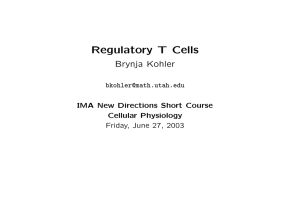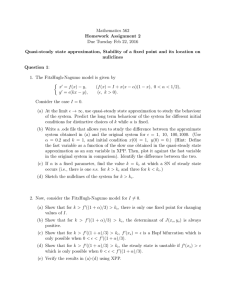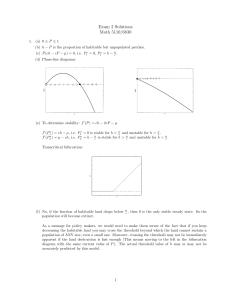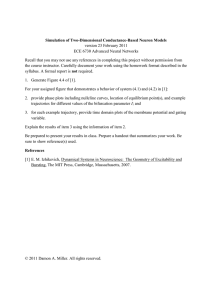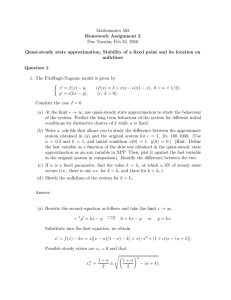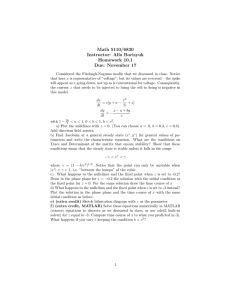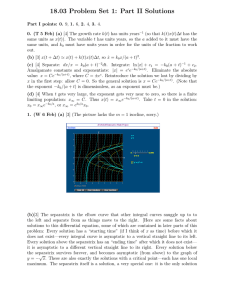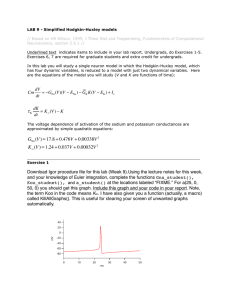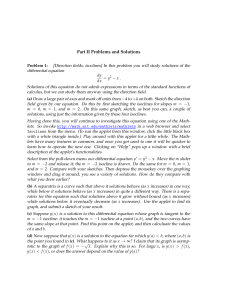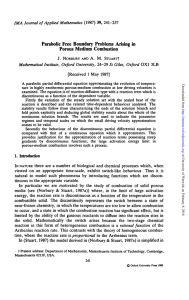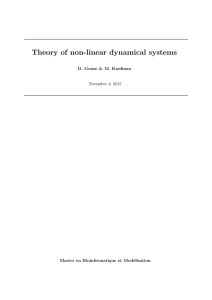Math 5110/6830 Homework 10.1 Solutions 1. (a) Right hand side vs a
advertisement
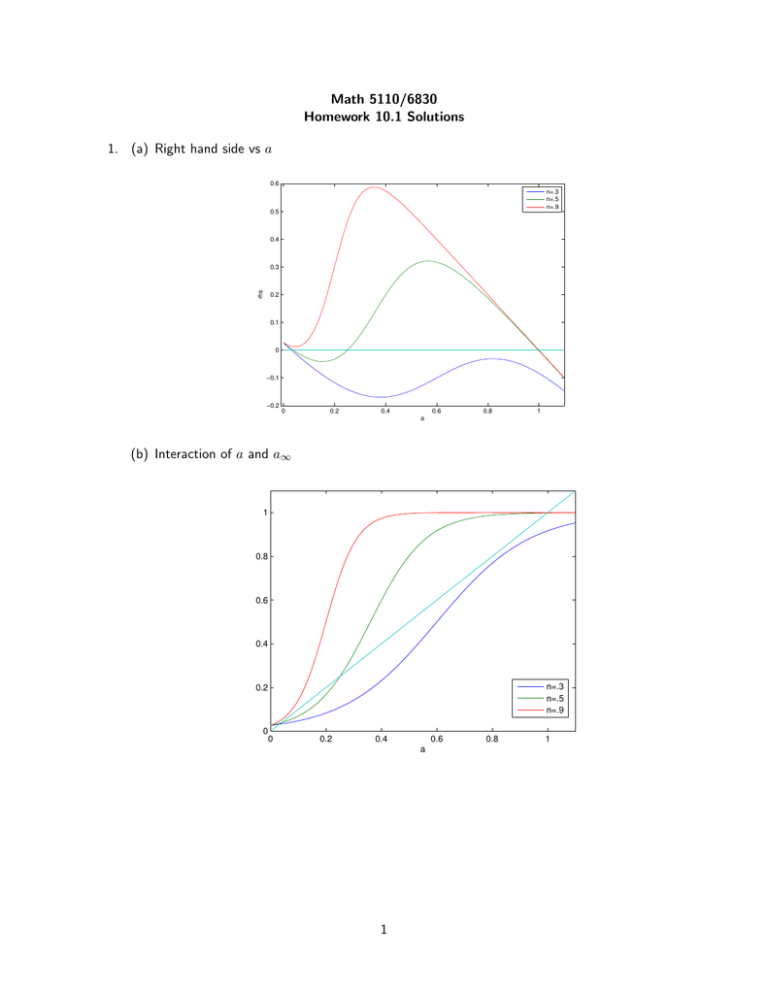
Math 5110/6830 Homework 10.1 Solutions 1. (a) Right hand side vs a 0.6 n=.3 n=.5 n=.9 0.5 0.4 rhs 0.3 0.2 0.1 0 −0.1 −0.2 0 0.2 0.4 0.6 0.8 1 a (b) Interaction of a and a∞ 1 0.8 0.6 0.4 n=.3 n=.5 n=.9 0.2 0 0 0.2 0.4 0.6 a 1 0.8 1 (c) Phase line 0.6 0.5 0.4 rhs 0.3 0.2 0.1 0 −0.1 −0.2 0 0.2 0.4 0.6 0.8 1 a As n increase, the right hand side shift upward. 2. (a) ao = 0 and no = 1 kn = .05 1 a n 0.9 0.8 0.7 0.6 0.5 0.4 0.3 0.2 0.1 0 0 50 100 150 time 200 250 300 Matlab Code idxmax=3000; %the number of iterations - idxmax*dt is the total time dt = .1; %delta t taua=1; taun=40; kn=0.05; ka=0.05; theta=0.18; ao=0; %Initial a no=1; %Initial n 2 a = zeros(1,idxmax+1); %Initialize vectors n = zeros(1,idxmax+1); %Initialize vectors a(1) = ao; n(1) = no; for i = 1:idxmax a(i+1) = dt/taua*(-a(i) + 1/(1+exp(-(n(i)*a(i)-theta)/ka))) + a(i); n(i+1) = dt/taun*(-n(i) + 1/(1+exp((a(i)-.5)/kn))) + n(i); end t = 0:dt:idxmax*dt; %time vector figure(1) plot(t,a,t,n,’--’) xlabel(’time’) legend(’a’,’n’) title(’kn = .05’) 3. Starting with n high, a will quickly move toward the upper stable steady state. While a is high, n will slowly decrease. a will follow along the steady state until it reaches the bifurcation point. a will then drop to the lower steady state curve. With a now low and n will begin to increase until a reaches the second bifurcation point. a will increase to the upper stable steady state curve and repeat. 4. When kn = .5 we obtain the following time series plot: 3 kn = .5 1 a n 0.9 0.8 0.7 0.6 0.5 0.4 0.3 0.2 0.1 0 0 50 100 150 time 200 250 300 By looking at the nullclines of the system, we can see why: 1 a−nullcline n−nullcline kn = .05 0.9 n−nullcline kn =.5 0.8 0.7 a 0.6 0.5 0.4 0.3 0.2 0.1 0 0 0.1 0.2 0.3 0.4 0.5 n 0.6 0.7 0.8 0.9 1 When kn increases we get 3 fix points. One of which is stable. Therefore, we move towards that fix point and stay there. 4
